Sorry to rain on Eliud Kipchoge’s parade, but his marathon feat is tainted by technology
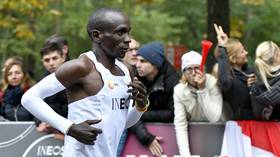
Eliud Kipchoge is a marathon legend but his achievement in smashing the two-hour mark must be ranked as a technological achievement as much as a physical one.
As the 34-year-old Kenyan blazed towards the finish line in Vienna on Saturday, arms outstretched, beating his chest, it was hard not to be swept along at the same blistering pace with him.
Here was man obliterating a barrier that no other human had ever broken; Kipchoge chewed up the 26.2-mile (42.2km) course in the Austrian capital in 1 hour 59 minutes and 40 seconds. He looked as if he barely broke a sweat.
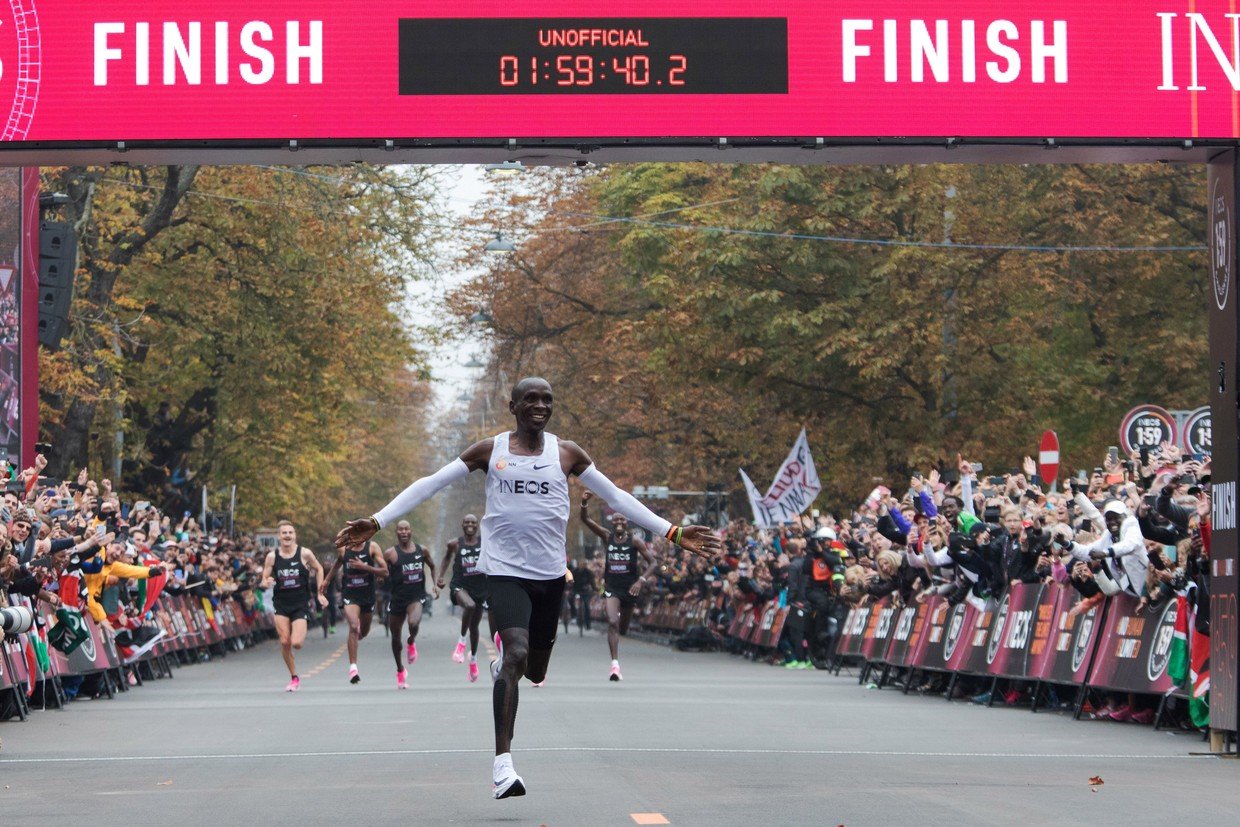
Event organizers INEOS – a chemicals giant owned by British billionaire Jim Ratcliffe – gushed on their Twitter feed that Kipchoge’s achievement ranked among milestones such as Roger Bannister running the four-minute mile in 1954, Neil Armstrong setting foot on the moon in 1969, and Usain Bolt smashing the 100m world record in 2009.
It was feted around the world as a “where were you when…” moment.
🇬🇧 1954 Roger Bannister breaks the 4-minute mile🇺🇸 1969 Neil Armstrong walks on the moon 🇯🇲 2009 @UsainBolt runs 100m in 09.58🇰🇪 2019 @EliudKipchoge runs a sub two-hour marathon#INEOS159#NoHumanIsLimitedpic.twitter.com/HMXnxRohE3
— INEOS 1:59 Challenge (@INEOS159) October 12, 2019
But of those feats listed above, it may well be Armstrong’s famous moon step which is best compared to Kipchoge’s sub-two-hour mile, given the level of technological groundwork that went into it.
Kipchoge agonizingly fell 25 seconds short in attempting to break the two-hour barrier at the Monza racetrack in Italy two years ago, but this time he and the organizers left absolutely nothing to chance.
Indeed, the extent of planning that went into the event on Saturday was staggering in its painstaking detail:
- a laser-guided route to maintain the perfect pace around a spectator-lined course chosen in Vienna’s Prater Park for its favorable gradients;
- a troop of 41 world-class pacesetters, rotating in groups and in the perfect wind-reducing formation;
- a start time carefully chosen and in conditions deemed most favorable by meteorological experts;
- energy gels handed to Kipchoge from a bike to avoid any need to break stride;
- a specially-designed pair of Nike shoes believed to be able to provide a 4-5 percent improvement for runners.
Admittedly that’s not quite approaching the level of a lunar expedition, but it did involve millions of dollars and was unlike anything seen before for an athletics event - even in the world of modern sport, where science and technology seem to play an ever-increasing role.
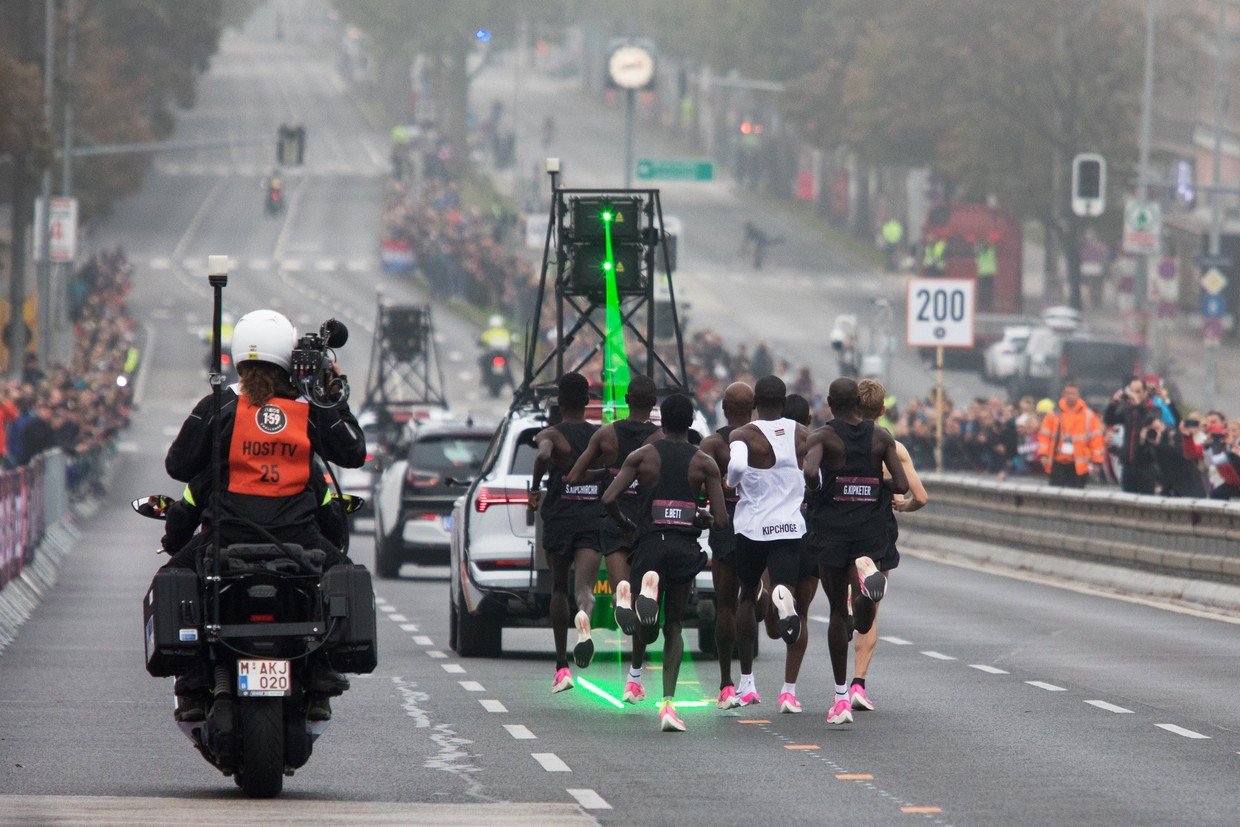
Some of these factors meant, of course, that Kipchoge’s time in Vienna was not classed as a world record. Instead, the mark he set at the Berlin marathon last year of 2:01:39 is still the official benchmark.
This is also not to disregard the remarkable runner that Kipchoge is; amid all the technology, he is the human heart of the story, an Olympic champion widely regarded as the greatest marathon runner of all time.
The project was based around him and his staggering abilities for a good reason. Give any other person on the planet – even elite athletes – access to the technology that Kipchoge had, and they would not come close to breaching the barrier.
To put Saturday’s achievement in perspective, the next time you are in a gym, crank the running machine up to 21kph and see how long you can stick the pace. That’s how fast Kipchoge ran on average for the whole course in Vienna.
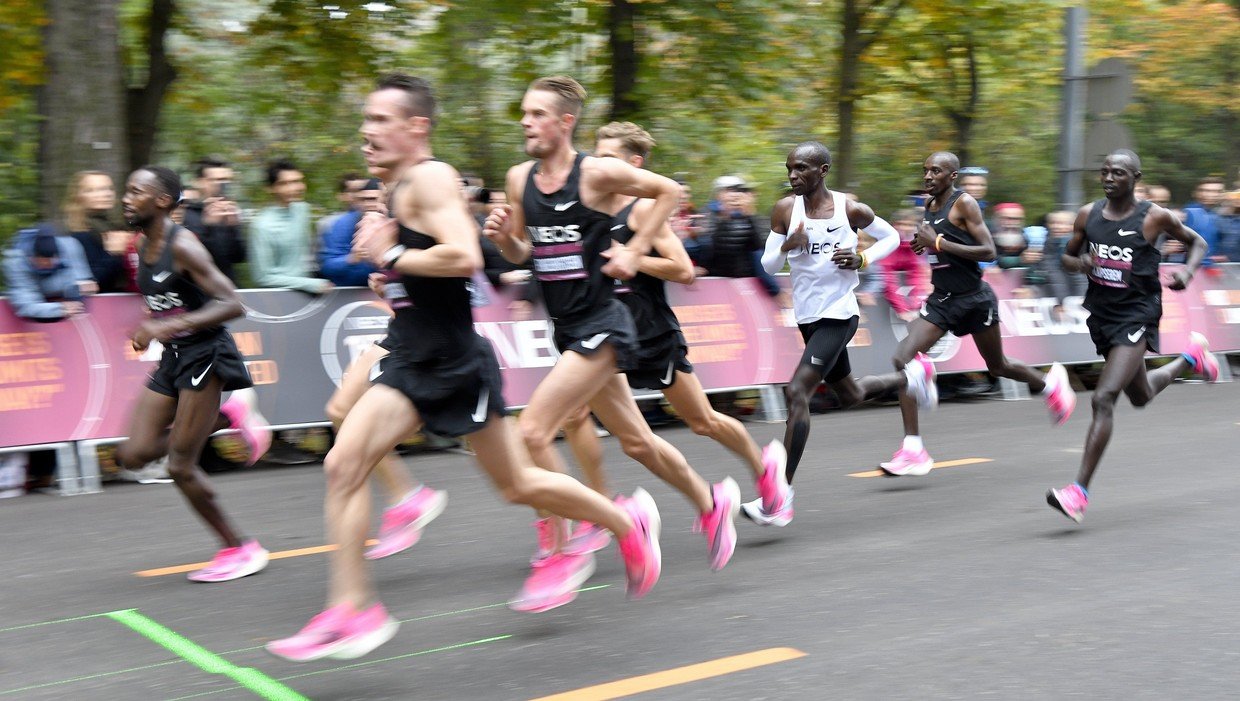
But we can’t escape the fact that the technology was there, the marginal gains accumulated so much that it taints the achievement.
Perhaps that is no more so than the Nike footwear that Kipchoge was wearing. His bespoke version of Nike’s ZoomX Vaporfly contain a thick foam sole with a curved carbon-fiber plate inside, which research says improves metabolic efficiency by around 4-5 percent. The five fastest marathons in history have been run by athletes wearing versions of the shoe, and while they aren’t banned, they are clearly not your average footwear.
I just cannot be enthused or amazed by current performances, and this is the main (new) reason (doping is always a shadow). They distort the “input-output” relationship even more than since 2016. It means you're watching the SAME runner, same performance, but now 1:00-1:30 faster https://t.co/Yz4oZWjxkZ
— Ross Tucker (@Scienceofsport) October 12, 2019
Yannis Pitsiladis, a professor who himself has been engaged in attempts to break the two-hour mark, has said the shoes give Kipchoge an “unfair advantage.”
The sight of Kipchoge even wearing the Nike swoosh may sit uncomfortably with some, given the recent scandal regarding its association with disgraced trainer Alberto Salazar and the closure of his Oregon Project at the company’s sprawling Portland base.
Less than 36 hours after Nike closed down the Oregon Project after their coach was banned for breaking anti-doping rules, everyone is celebrating a sub 2 hour marathon run in special shoes designed by the same people. The world moves on as fast as Eliud Kipchoge can run.
— Matt Lawton (@Lawton_Times) October 12, 2019
It should be stressed that Kipchoge himself has not faced doping allegations, nor is there any suggestion of foul play in Saturday's run.
The man himself spoke in typically elegant fashion when asked about athletics’ woes on the eve of his run in Vienna, answering: “In a garden, there are flowers and there are weeds. In Vienna we are talking about the flowers.”
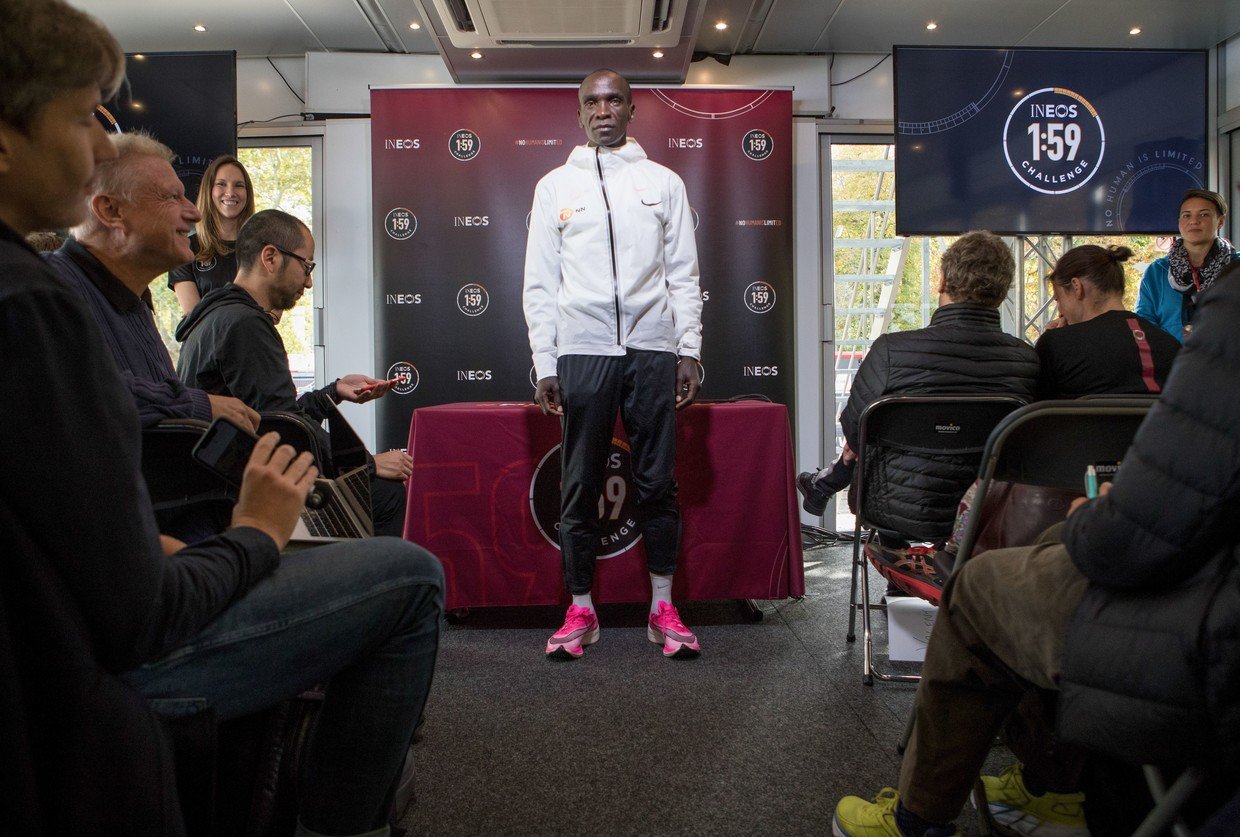
He added on Saturday that his achievement “shows the positivity of sport. I want to make it a clean and interesting sport. Together when we run, we can make it a beautiful world."
Fine words, and well-meaning, but the desperation to cling to this moment as some kind of beacon of light as athletics is buffeted by scandal should be resisted.
After all, Kipchoge was not the only one who made Saturday in Vienna possible - it was just as much a testament to technology.
By Liam Tyler














